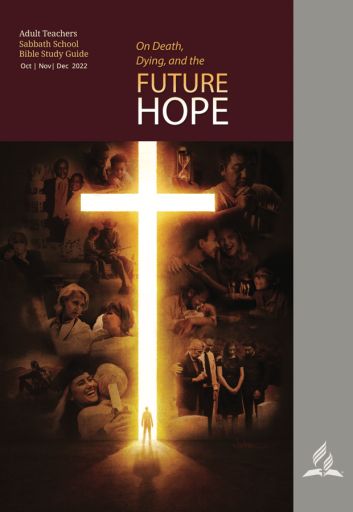
On Death and Dying: Our Future Hope
God created human beings to enjoy eternity in a loving relationship with Him and His creation. But this relationship was distorted by the mysterious appearance of sin within the heavenly courts (Isa. 14:12–15, Ezek. 28:12–19, Rev. 12:7–12) and the subsequent fall of Adam and Eve (Gen. 3:1–19, Rom. 5:12). Tragically, death engulfed not only the human race but also all life, as well. Expressions of death can be seen today in the leaves that fall from the trees, the flowers that fade in our vases, our innocent pets who die in agony, and our beloved ones who are taken from us so brutally. Our world is full of suffering and unwiped tears.
Longing for a better world, people have painted for themselves many “paradises” in which they would like to live. For example, in 1933 English novelist James Hilton released his book, Lost Horizon, which a few years later was turned into a film under the same title. The film captures the plight of people on an airplane that runs out of fuel, eventually crashing into the snow-covered Himalayan Mountains. The pilot dies in the crash, but the few who survive are pulled from the wreckage and escorted by a group of Tibetans to the paradisiac valley of Shangri-La. Isolated from the outside world, the inhabitants grow in love and wisdom, living an almost immortal life of enduring harmony and joy.
Of course, it’s only fiction.
As mortal human beings, we need assurance in the present and hope for the future. As well stated by the Swiss theologian Emil Brunner: “What oxygen is for the lungs, such is hope for the meaning of human life. Take oxygen away and death occurs through suffocation, take hope away and humanity is constricted through lack of breath; despair supervenes, spelling the paralysis of intellectual and spiritual powers by a feeling of the senselessness and purposelessness of existence. As the fate of the human organism is dependent on the supply of oxygen, so the fate of humanity is dependent on its supply of hope.”—Eternal Hope (London: Lutterworth Press, 1954), p. 7. Indeed, the biblical hope sustains us during the existential crises we face in our journey toward eternity.
In contrast to the fictional Shangri-La of the Lost Horizon, our hope of eternal life does “not follow cunningly devised fables” (2 Pet. 1:16, NKJV). It is based on God’s trustworthy promise of a perfect world with no more tears, pain, or death (Rev. 21:1–5). This precious promise inspired the apostolic church and was held, and cherished, by many Christians throughout the centuries. Without ever losing its power, this same promise gives meaning and purpose to our present lives. It allows us to look with confidence into the future. It assures us that all our beloved ones who died in Christ will finally be raised from the dead to inherit eternal life.
The present Bible study guide deals with the subject of the great controversy between good and evil from the perspective of two major themes. One is the origin and ongoing existence of sin and death. The other theme is God’s enduring work to solve these problems and bring the world back to its original perfect condition. Special emphasis also is given to the mortal nature of human beings and how the resurrection is what leads to immortality. In reality, we should not fear death because Christ died for us and overcame the power of death. Actually, we are assured that He holds “ ‘the keys to death and to the place of the dead’ ” (Rev. 1:18, NCV).
This quarter, we will explore the painful subject of death but through the lens of the hope offered us through Jesus.
Alberto R. Timm, PhD (Andrews University), is an associate director of the Ellen G. White Estate, Inc., and a member of the Biblical Research Institute Committee (BRICOM) and the Geoscience Research Institute Committee (GRICOM). Previously he served as presi dent of the multicampus Latin-American Adventist Theological Seminary.
© 2022 General Conference of Seventh-day Adventists®. All rights reserved. No part of the Adult Sabbath School Bible Study Guide may be edited, altered, modified, adapted, translated, reproduced, or published by any person or entity without prior written authorization from the General Conference of Seventh-day Adventists®. The division offices of the General Conference of Seventh-day Adventists® are authorized to arrange for translation of the Adult Sabbath School Bible Study Guide, under specific guidelines. Copyright of such translations and their publication shall remain with the General Conference. “Seventh-day Adventist,” “Adventist,” and the flame logo are registered trademarks of the General Conference of Seventh-day Adventists® and may not be used without prior authorization from the General Conference.
For questions and concerns about the Adult Bible Study Guide, please contact the Editor of the Bible Study Guide, Clifford R. Goldstein